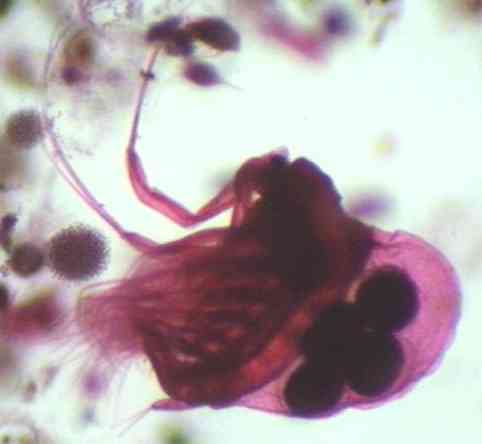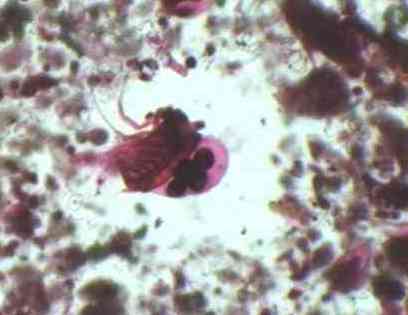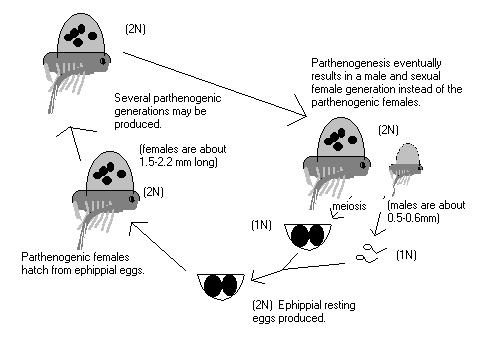|
Classification Kingdom - Animalia Holopedium gibberum, was first described in 1855 by Zadach, and has had very few taxonomic changes (Balcer 1984). Anatomy Holopedium gibberum is a very distinct organism relative to other cladocerans. The organism ranges from approximately 1.5-2.2 mm in length for females and 0.5-0.6 mm for males. The postabdomen is elongated with up to 20 small spines (Ward 1918). H. gibberum has a very large humped carapace or brood pouch, with a transparent, but obvious when handled, gelatinous sheath covering most of its body (figure 2). This mantle is often twice as long as the body of the organism and may serve as a sort of protection from predation although some scientists believe that it is used as a buoyancy control mechanism. In preserved samples, in which the gelatinous sheath has not been lost, settling on a flat surface will show a clear spot with a small dark center that appears similar to a small fish egg. The organisms will often be found in groups attached by their gelatinous mantles. The mantle is composed of one or more acid muco-polysaccharides. Other characteristics of, H. gibberum, include six swimming appendages and a uniramous second antennae in the females (figure 1) and biramous second appendages in males. Distribution H. gibberum has a wide range. They are found in northern arctic lakes in Europe, as well as North America. They are found in various basins of the Great Lakes, and also many inland lakes. Habitat H. gibberum prefer mainly cool, oligotrophic, soft-water lakes with low pH (4.8-7.5). It may be found in some "hard" water situations. They may be found in both littoral and pelagic regions of the lake. Feeding H. gibberum is an omnivore. The organism filters mainly phytoplankton, and in some cases it has been found to consume mostly nannoplankton. A "T" shaped gap in the transparent mantle on the organisms ventral surface allows it to take in filtered food. H. gibberum seems to be adapted to survival in areas where food is scarce. The organism undergoes a diurnal migration each day. H. gibberum moves towards the surface near sunset and returns to deeper waters during daylight hours. The gelatinous mantle may aid the organism in this migration. Life History There are both sexual and asexual forms of reproduction. Asexual development is visible under a dissecting microscope (Figure 3). Several parthenogenic generations are produced throughout the summer months. In late summer or early fall, a generation of males and sexual females will emerge. At this time approximately 25% of the population will be male and produce sperm. The females produce ephippial resting eggs that are fertilized by the males. The resting eggs will hatch in the spring producing parthenogenic females. The parethenogenic cycle will resume again until fall (Figure 4). 
Figure 3: Female Holopedium gibberum with well developed brood. |
Holopedium gibberum 
Figure 1: Female Holopedium gibberum showing uniramous second antennae, six pair of swimming appendages, and humped back brood pouch with developing young. 
Figure 2: Holopedium gibberum surrounded by a clear area created by the organisms thick gelatinous mantle. Notice that there is very little mantle on the ventral surface. 
Figure 4: This picture shows the reproduction of Holopedium gibberum through various life stages. |
Works Cited Balcer, B.D., N.L. Korda, S.I. Dodson. 1984. Zooplankton of the Great Lakes. The University of Wisconsin Press, Ltd. London, England. pp. 56-58. Ward, H.B., G.C. Whipple, Ed. W.T. Edmonson. 1918. Fresh Water Biology Second Edition. John Wiley & Sons, Inc. New York. pp. 603. |
